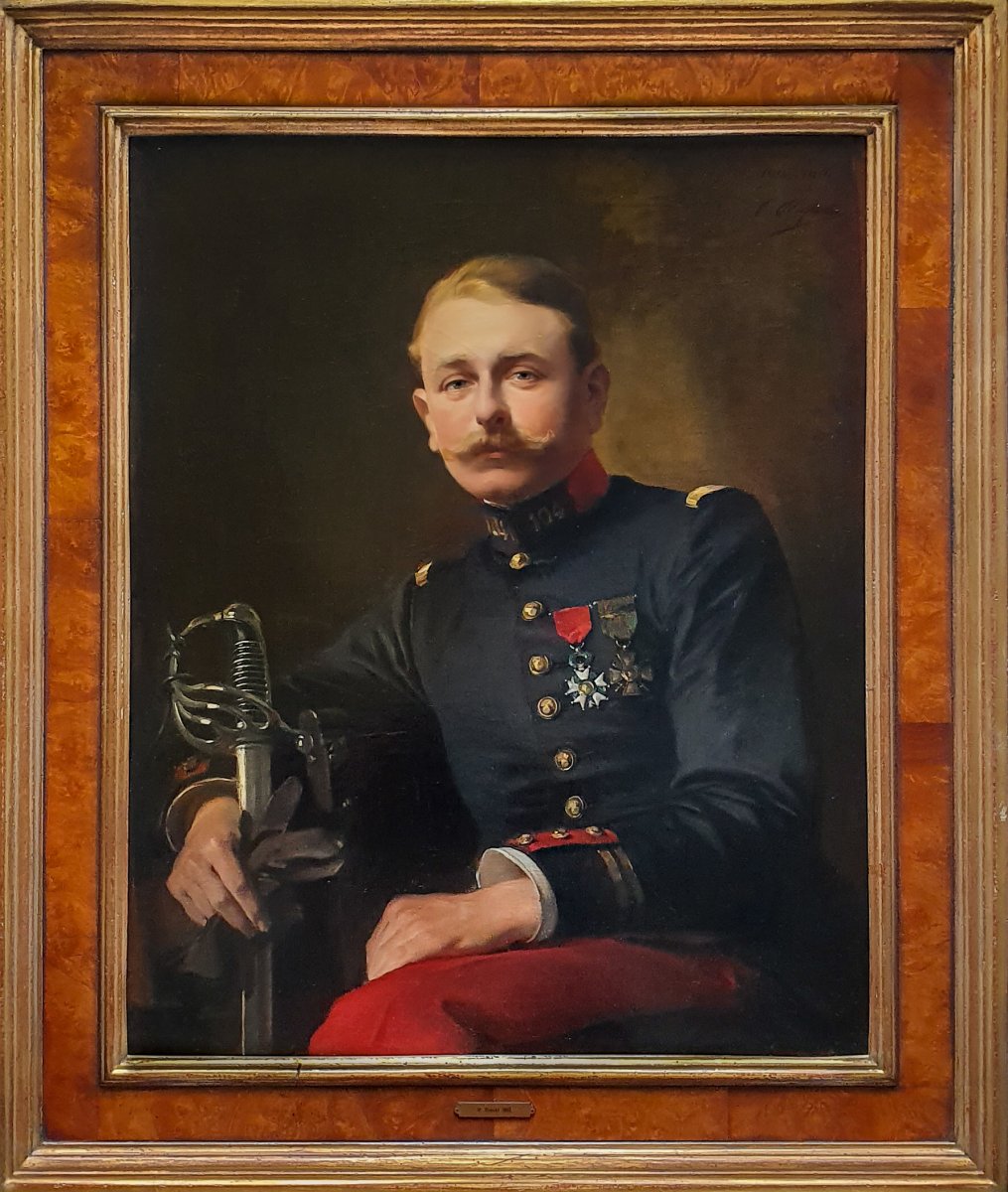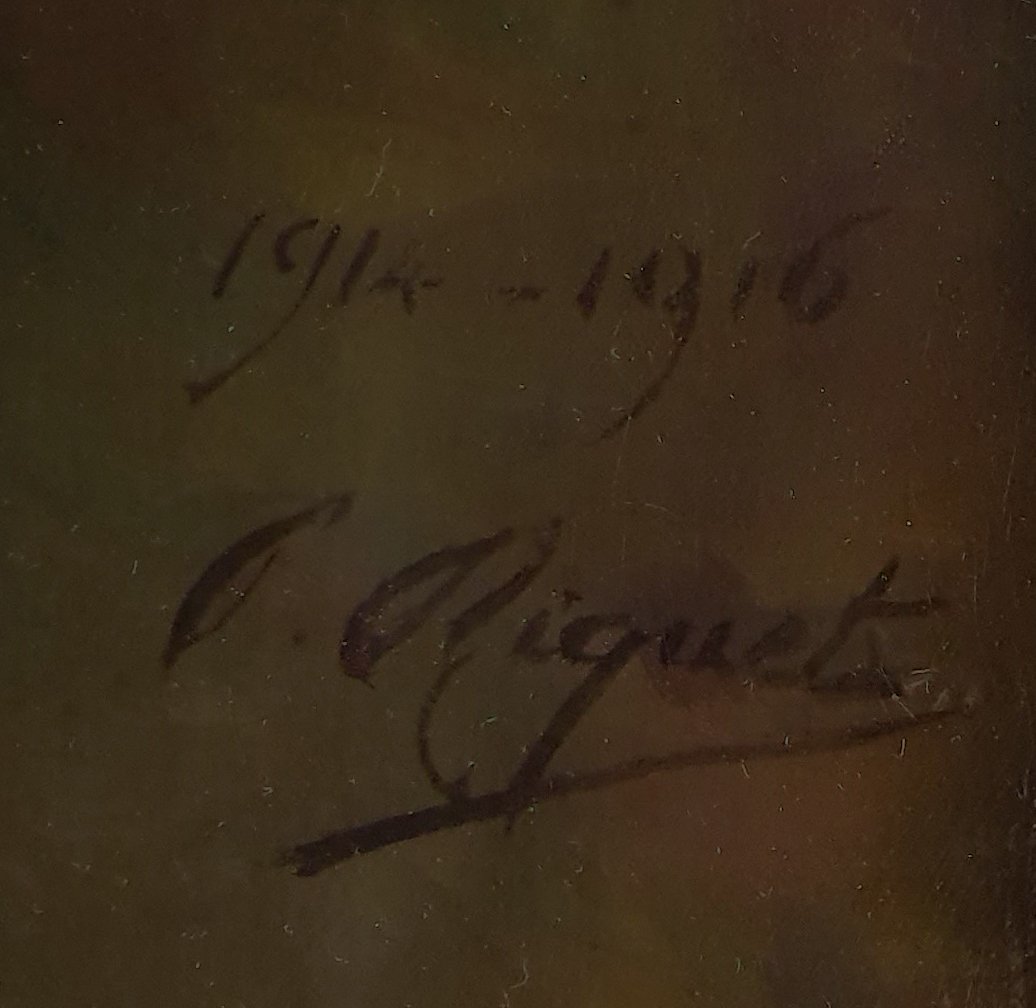This masculine portrait is striking in quality and its virtuoso treatment of the fabrics, portraying different texture and how they reflect the light. The handling and rendering of the paint and the high degree of realism is very good. These types of large-scale portraits were popular during the late 19th and early 20th century and there were many artists working in this lucrative area. Many individuals wanted to immortalise themselves at, what was no doubt, a significant and poignant time in their life and in their country.
The gentleman proudly wears the badge of the Legion of Honour suspended from a red ribbon upon his left breast. This insignia is the highest French order of merit for military and civil merits, of which there are five distinctions, and this badge is the highest rank, Chevalier (Knight). The second badge, a square-cross medal on two crossed swords, hanging from a ribbon, is the Croix de Guerre (Cross of War). It was first created in 1915. The Croix de Guerre may be awarded either as an individual award or, as in this case, was issued to military units whose members performed heroic deeds in combat and were subsequently recognised by headquarters during World War I.
The portrait is signed and dated '1914-1916 P Riquet' – the years of the Great War. The portrait was probably painted in 1914 and then re-worked by adding the Croix de Guerre, when the sitter received the award during 1915 or 1916 (the award was first created in 1915), thus dating the canvas 1914-1916.
Paul Riquet was born in Paris in 1860. He was a pupil of Henner and Galland and he exhibited at the Salon des Artistes Français in Paris from 1895 onwards, winning a medal in 1906.
Provenance: Private collection in Belgium
Measurements: Height 103cm, Width 87cm framed (Height 40.5”, Width 45.25” framed)

























 Le Magazine de PROANTIC
Le Magazine de PROANTIC TRÉSORS Magazine
TRÉSORS Magazine Rivista Artiquariato
Rivista Artiquariato
